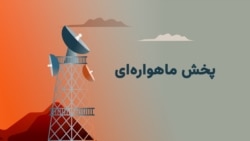Also sprach Zarathustra: Exploring Avestan language and culture in Episode 8 of "Dingo"
In this episode of the #"Dingo" podcast, we delve into another branch of the Iranian language family: Avestan. We'll examine the historical period during which this language was prevalent, its geographical distribution, and its grammatical structure and composition. Additionally, we'll discuss the culture of the Avestan people.
Produced by: Mani Parsa
In collaboration with: Shahriar Siami
منابع/Sources:
کلنز، ژان و بویس، مری: اوستا و مردمان اوستایی، ترجمه سید سعیدرضا منتظری. دوفصلنامه هفت آسمان ۱۳۸۷ شماره ۳۷
لغتنامه دهخدا، مدخل ارتشتار. به نقل از ایران در زمان ساسانیان، نوشته کریستنسن ص ۸۱.
Encyclopaedia Iranica Foundation. “Avestan people”. December 15, 1987. in: Iranicaonline.org, 2024.https://www.iranicaonline.org/articles/avestan-people.
E. Yarshater, “AFRĀSĪĀB,” Encyclopædia Iranica, I/6, pp. 570-576; an updated version is available online at http://www.iranicaonline.org/articles/afrasiab-turanian-king (accessed on 14 March 2014).
Gray, Louis H. 1927. The “Ahurian” and “Daevian” Vocabularies in the Avesta.
Mallory, J. P. n.d. In Search of the Indo-Europeans : Language, Archaeology, and Myth. New York, N.Y.: Thames and Hudson.
Kuzʹmina, E. E., and J. P. Mallory. 2007. The Origin of the Indo-Iranians. Leiden, the Netherlands: Brill.
Talageri, Shrikant G. 2010. The Rigveda and the Avesta : The Final Evidence. New Delhi: Aditya Prakashan.


